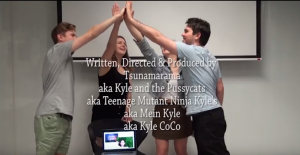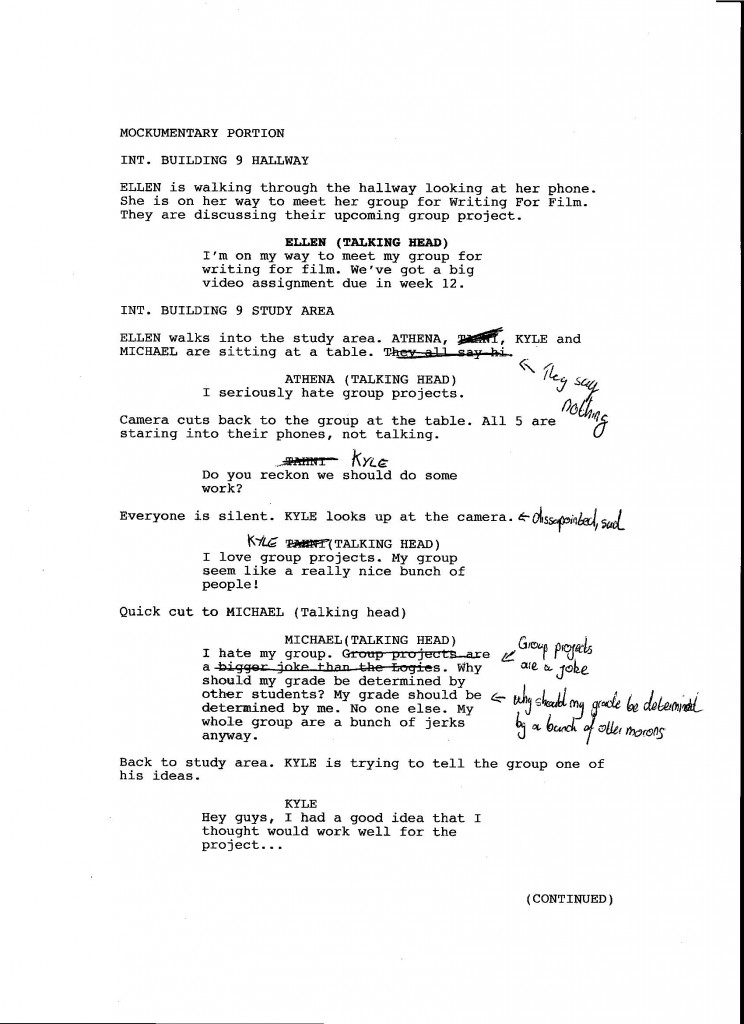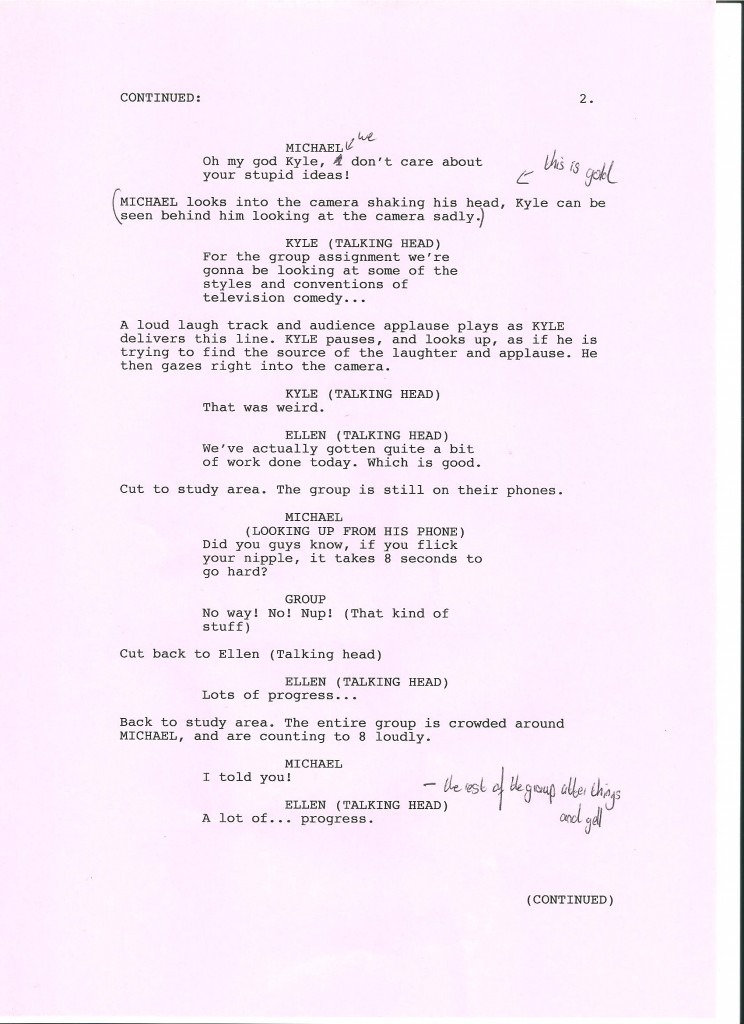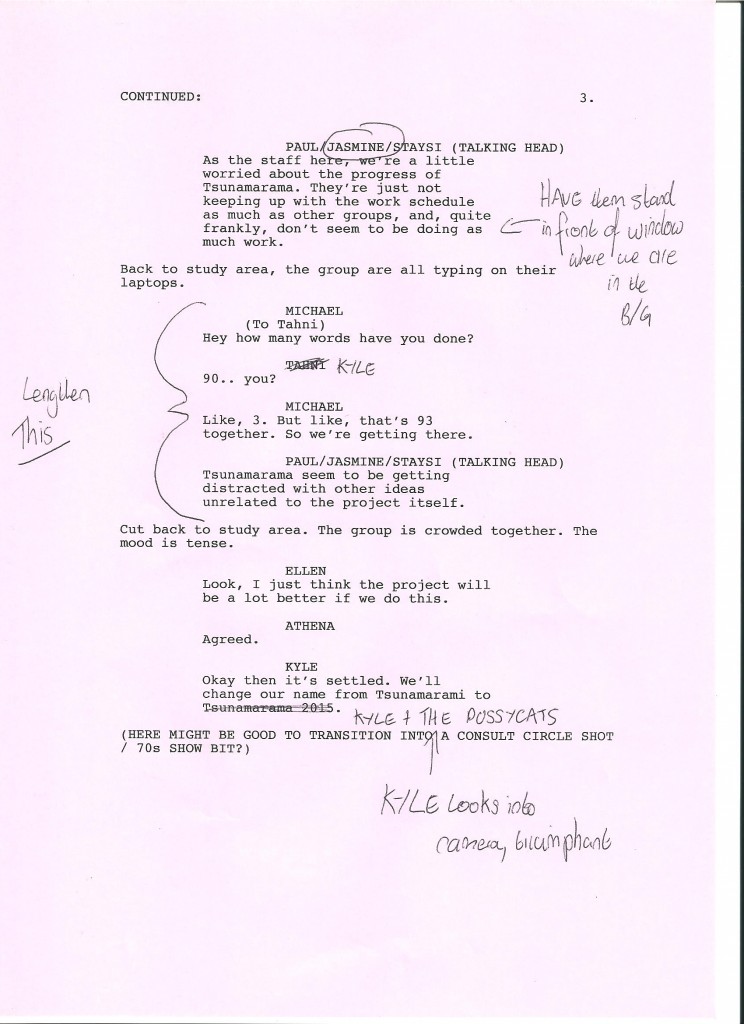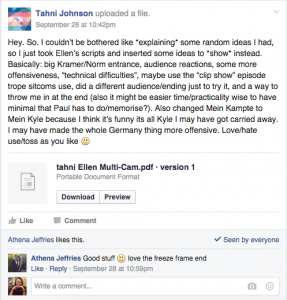This semester, we were asked to explore something. We decided to explore different formats for shooting comedy. Mockumentary, Stoner Circle and multi-cam live audience were our chosen formats. We’ve come away with three rough drafts, but with a greater understanding of what it takes to write and make a comedy.
Multi-cam seems to have been my main focus over the semester. Some of my favourite TV shows are shot in this style, and I was interested to see why it is losing traction in the industry. Reflecting on our work on this format, I can see that it is limited, hard to write for, and difficult to get right. It is cheap and efficient, yes, but at the cost of great humour and fantastic improvised moments.
The mockumentary format is in it’s hey-day, with shows like The Office and Parks and Recreation proving that this format makes for great comedy. Other shows, like Veep, show how the style can be altered to fit specific narratives. The mockumentary was the easiest form for us to film. It allowed us the greatest freedom to improvise, and the format naturally lends itself to humour.
Finally, the stoner circle shot was a bit of a curveball. It’s not used often, and it suits a very particular style of comedy. We did our best to create a good scene, and Athena’s script worked well. In editing, we made an effort to make it sharp and punchy, speeding up the pans and cutting quickly between lines.
Filming and writing each piece taught us a lot about the different formats, as evidenced in my individual posts about them. They also allowed us to work collaboratively. Being able to write with the creative writing students meant I could get my ideas across through in their writing. At times, the group work became tiring, especially towards the end of the semester, but being able to go off an edit individually meant we could still maintain some independence in our work.
